Want to grow your own fresh fruits and veggies, but think you need a big yard? Think again.
A balcony garden can be a game-changer even a tiny space can give you fresh produce, a peaceful spot to relax, and a way to cut down on grocery bills. Whether you’re in a high-rise apartment or a small city flat, you can absolutely make it work.
Let’s break down exactly how to start your own balcony garden, step-by-step.
What Exactly Is the Balcony Garden Trend?
A balcony garden is a mini-garden set up in your balcony using pots, containers, hanging planters, or vertical stands. You can grow everything from herbs and leafy greens to small fruits like strawberries or tomatoes.
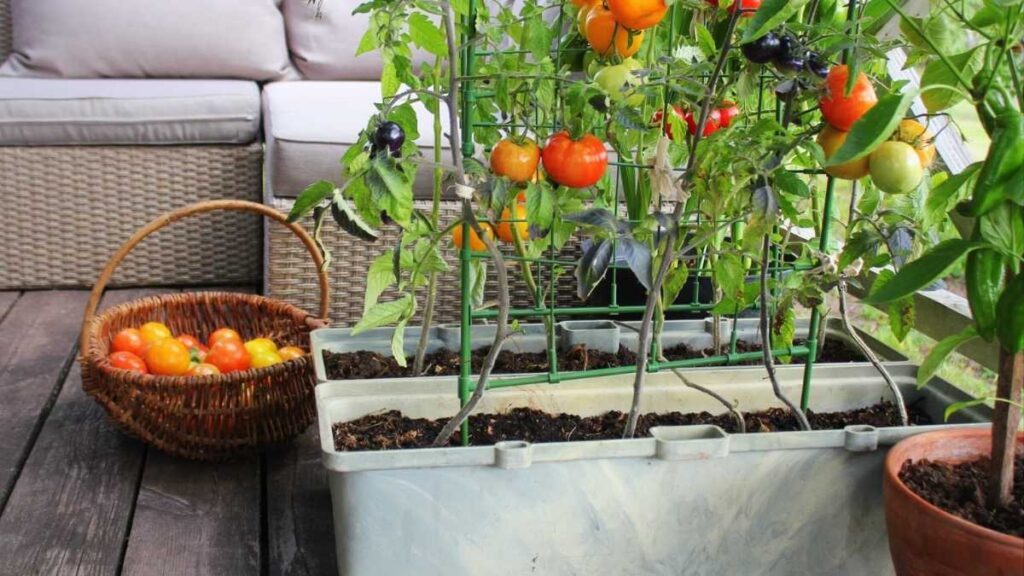
The trend has picked up big time, especially since more people want control over their food and love the idea of growing something right outside their window.
No yard? No problem.
What’s the Best Time to Start a Balcony Garden?
You can start anytime, but the best time really depends on where you live and what you want to grow.
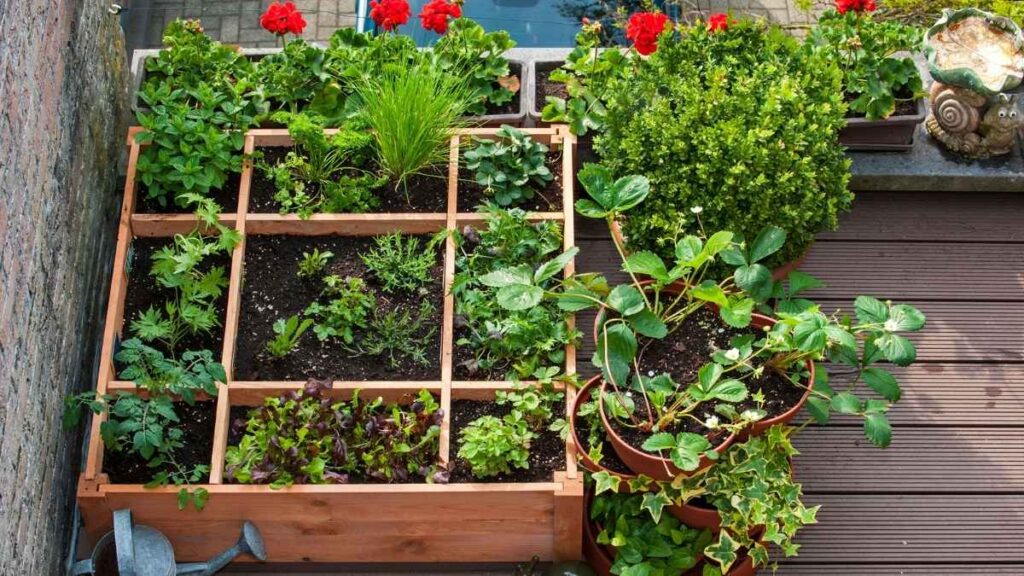
- Spring (March to May) is ideal for most herbs, leafy greens, tomatoes, and peppers.
- Early summer works well for eggplants, cucumbers, and basil.
- Fall is great for root veggies like carrots and radishes, or cool-weather greens like spinach and lettuce.
Tip: Always check the seed packet or plant label it usually tells you the best growing season.
How Balcony Gardens Work – Explained Simply
Balcony gardening is all about using containers wisely, choosing the right plants, and giving them the care they need water, sunlight, and nutrients.
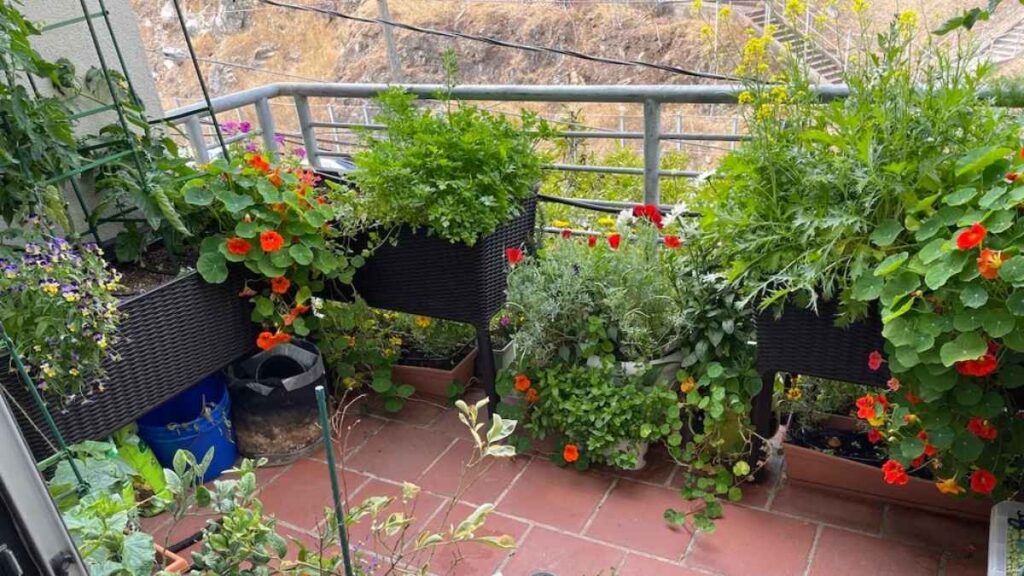
Here’s a quick overview:
| Element | What to Know |
|---|---|
| Containers | Use pots, crates, grow bags just ensure good drainage. |
| Soil | Use lightweight potting mix, not regular garden soil. |
| Sunlight | Most fruits & veggies need 4–6 hours of sun daily. |
| Watering | Water daily in summer, less in winter. Don’t overwater. |
| Fertilizer | Use organic compost or liquid fertilizer every 2–3 weeks. |
You don’t need a green thumb just some consistency and a bit of patience.
What They Are: The Best Fruits & Veggies for Balconies
Not everything grows well in small spaces but plenty of plants do. Here are some of the easiest and most productive options for a balcony garden:
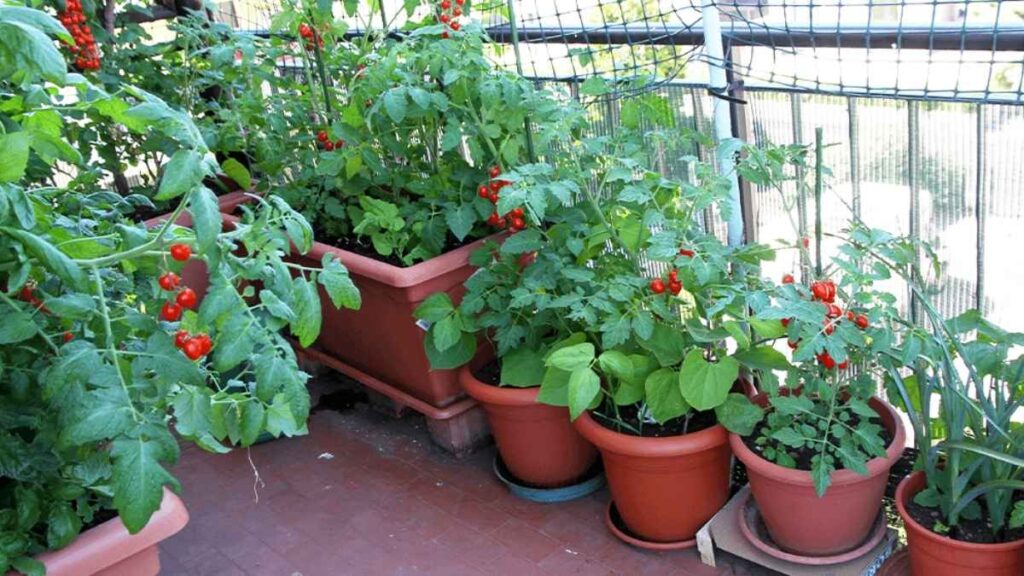
Easy Vegetables:
- Tomatoes – Cherry or dwarf varieties work best.
- Chilies & Peppers – Compact and high-yielding.
- Spinach & Lettuce – Fast-growing and perfect for containers.
- Radish & Carrot – Use deep pots for roots.
- Green Beans – Climbers that love trellises.
Best Balcony Fruits:
- Strawberries – Grow well in hanging baskets.
- Lemons or Limes – Dwarf citrus varieties in large pots.
- Figs – Compact trees that can be pruned to size.
- Papaya (Dwarf) – If you have a sunny, wind-protected balcony.
Start small with 2–3 types and expand as you gain confidence.
What Is the Right Setup for Your Balcony Garden?
You don’t need fancy equipment but a smart layout helps your plants thrive.
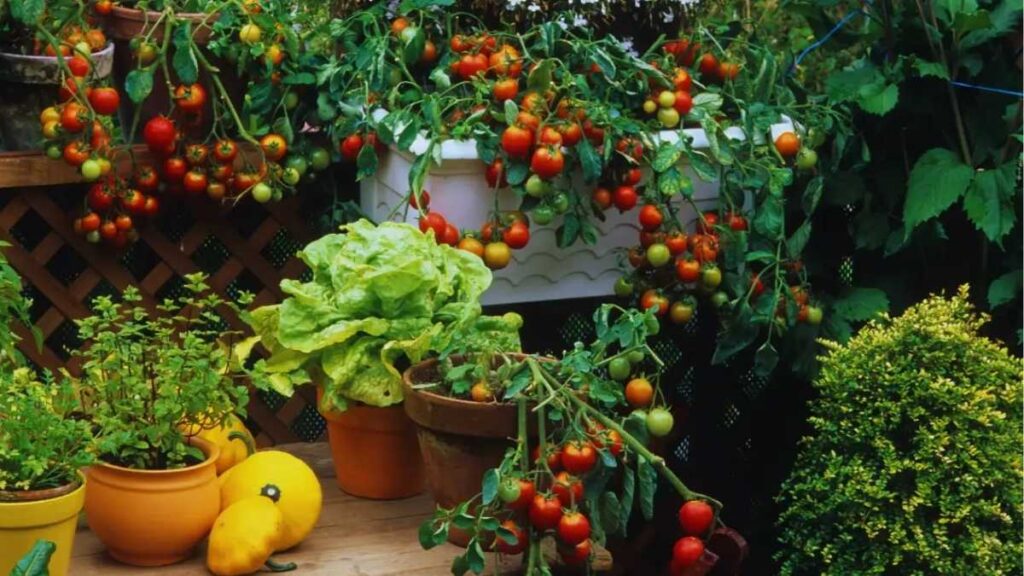
Step-by-Step Setup:
- Check sunlight: Which direction does your balcony face? South and west-facing balconies get the most light.
- Choose containers: Plastic pots, terracotta, hanging planters, vertical racks mix and match based on your space.
- Get good soil: Use organic potting mix with compost. Avoid heavy garden soil.
- Install railing planters or shelves: These save floor space and look beautiful.
- Add a watering can or drip tray: Keeps things neat and stress-free.
Don’t overcrowd air circulation is key to healthy plants.
Common Mistakes With Balcony Gardening and How to Avoid Them
Even enthusiastic beginners run into a few roadblocks. Here’s what to watch for:
| Mistake | How to Avoid It |
|---|---|
| Overwatering | Stick your finger 1 inch into the soil. If it’s dry, water. |
| Not enough sunlight | Grow shade-tolerant plants like mint or spinach. |
| Using poor soil | Use a mix of compost, cocopeat, and perlite. |
| No drainage holes in containers | Always drill holes or use pots with them. |
| Growing too much too soon | Start with 3–5 plants and build gradually. |
Start simple, and let your garden grow with your skills.
Best Tips to Make the Most of Your Balcony Garden
These practical tips will save you time, money, and stress:
- Reuse containers: Old buckets, crates, or even teacups can be upcycled.
- Use vertical space: Wall planters, hanging baskets, and trellises free up floor space.
- Collect rainwater: A small bucket on the balcony during rain = free, clean water.
- Label your plants: Helps you track what’s growing and when to harvest.
- Rotate crops: Change up plant placement every few months to keep soil fresh.
Conclusion: You Don’t Need a Backyard to Grow Your Own Food
Balcony gardening isn’t just about saving money it’s about better health, a greener lifestyle, and the quiet joy of watching something grow.
Even a small balcony can give you fresh tomatoes for your salad, mint for your tea, or strawberries for your breakfast bowl.
So grab a few pots, pick your favorite herbs or veggies, and start small. Within a few weeks, you’ll be harvesting your own food and loving every second of it.
FAQs About Starting a Balcony Garden
What fruits can I grow in a balcony garden?
You can grow strawberries, dwarf lemons, limes, figs, and even papayas in containers on your balcony, provided there’s enough sun.
When should I water my balcony plants?
Water in the early morning or evening. Check soil moisture daily if the top inch is dry, it’s time to water.
Why isn’t my plant growing well?
It could be due to poor sunlight, overcrowding, or incorrect watering. Check if the pot has drainage holes and whether the plant’s getting enough nutrients.
How much sunlight does a balcony garden need?
Most edible plants need at least 4–6 hours of direct sunlight daily. If you get less, focus on leafy greens and herbs.
Can I grow vegetables without soil?
Yes, you can try hydroponic setups or grow with cocopeat and nutrient solutions, but it’s more advanced and costly for beginners.



